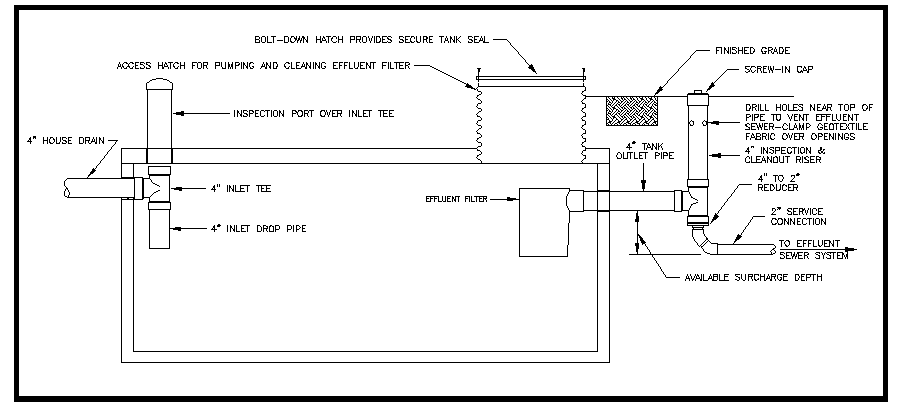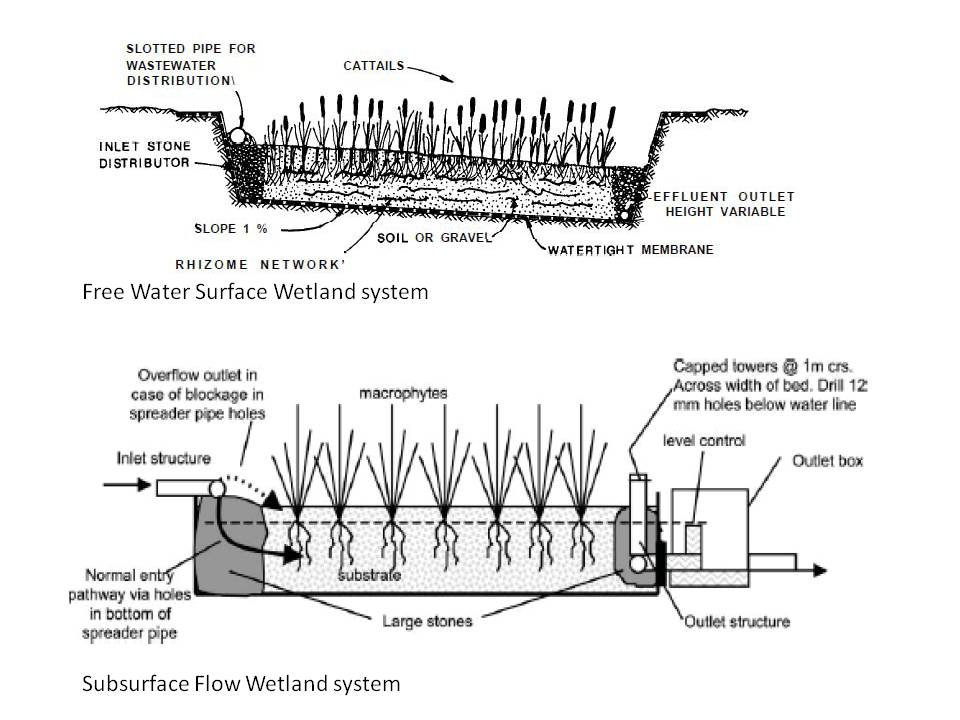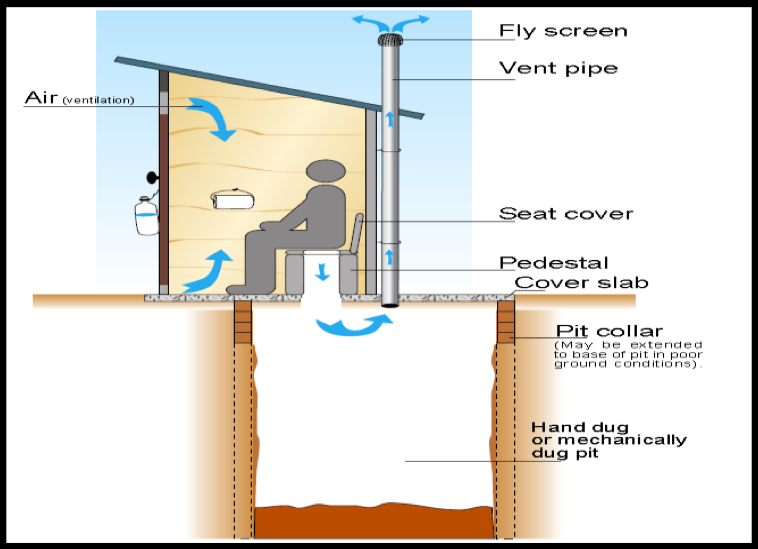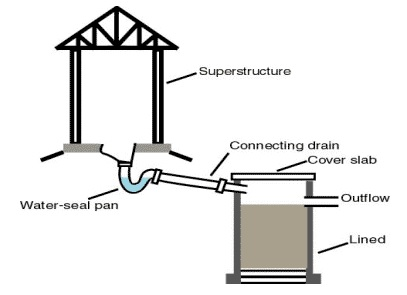Background
According to the United Nations, every day, 2 million tons of sewage is dumped into the world’s waterways. In fact, in developing countries, 90 percent of all wastewater goes into water untreated. As cities outgrow their sanitation systems, wastewater can go straight into rivers, affecting downstream populations [1]. The true danger of sewage is pathogens; untreated wastewater is brimming with bacteria, viruses, and parasites, many of which cause deadly diseases. About five million people die every year from these waterborne diseases [2], and over a billion people rely on unsafe sources of water to live [3]. The most common illness related to untreated sewage water is gastro-enteritis, an infection of the gastrointestinal tract, which can lead to vomiting, diarrhea, and eventually severe dehydration as a result. Open cuts and rashes are also much more likely to become infected when exposed to untreated wastewater [4]. An essential part of water security is ensuring that pathogens from sewage do not contaminate the water. Another reason for improving sewage system is to be able to reuse the water used for waste disposal.
Solutions
1. International Cooperation
Because sewage that enters a transboundary water system impacts countries downstream that have no say in the matter, an international agency will be required so different countries can decide upon acceptable levels of pollution; Mission 2017 recommends using the World Health Organization (WHO) drinking water standards. This meeting will be especially beneficial to less-powerful, downstream countries who have to suffer from the effects of the pollution dealt them by upstream countries. As with industrial pollution, this conference must take place immediately, before any national regulations are developed, to ensure that they are in accordance with the international agreement. More information on how these agreements will be reached can be found here.
2. Regulations
Mission 2017 strongly suggests that each national government should develop regulations to set standards for sewage, runoff, and other publicly treated water if they do not yet have any. The standards would be created by the government’s environmental agency and can be modeled off another country’s; for example, the Environmental Protection Agency (EPA). These standards need to be established immediately, though enforcement need not begin for five years, to give time for governments to improve infrastructure.
Regulation will most likely work best in urban areas, where centralized facilities can be inspected can visit and audit treatment facilities often. Rural areas may not even have central facilities to audit – for example, an isolated village with only hand-dug latrines – in which case regulations will not be applicable. There, investing in infrastructure may be the best way to ensure cleaner water.
3. Infrastructure
The second stage of the plan is when construction on existing infrastructure systems actually begins, to be overseen by the environmental agency. In order to better treat polluted water, countries need to develop better sewage treatment systems. This stage of the plan is best managed on the local rather than national level, which can better assess a region’s needs. Construction should commence as soon as funds are raised and regulations have been set; fundraising should also take place throughout the regulation process. As a baseline for cost estimates, constructing a plant that can handle over ten thousand liters per second will cost around $150 million. See the Financing section for more details.
In urban areas, improving infrastructure for sewage treatment is a question of local government: the city council will be in charge of reviewing the city’s needs and establishing a committee (or whatever sort of organization is needed) to design and construct the system. Here Mission 2017 leaves it up to the city to decide exactly how infrastructure will be improved, rather than force a detailed plan upon them. However, it is highly recommended that all local government analyze their current sewage treatment systems and update their systems to achieve the environmental agency’s newly set out standards.
In developing countries, building an entire sewage treatment system may be too expensive [5], so some alternatives are set out here:
1. Effluent sewage: A combination of a traditional septic tank and a complete sewer system. Waste first goes into a watertight (to prevent groundwater from entering) interceptor tank. Two homes could be routed to each interceptor tank to cut down costs. A filter that will prevent solids from passing will be on the entrance to the pipe that takes wastewater to the central wastewater treatment plant. These pipes can be smaller because they will only carry liquid waste [6]. The operating costs of effluent sewage systems are 25 percent of those of conventional sewage systems [7].
 Figure 1: An effluent sewerage system [21]
Figure 1: An effluent sewerage system [21]
2. Wetlands (natural or artificial): The wetlands consist of aquatic plants growing in soil with water flowing over and through it. Underground, a barrier reduces seepage into shallow unconfined aquifers. Bacteria, fungi, and actinomycetes in the wetland decompose the organic material in sewage; however, this leaves the water with a low dissolved oxygen level. The aquatic plants take up nitrogen and phosphorous from the decomposed wastewater and release oxygen into the water, which can be used by the decomposers. This cycle continues, resulting in treated wastewater [8]. Artificial wetlands have been used successfully in various locations, including China, the Philippines, Burma, India, and Thailand [9]. This option is low-cost and is not widely used in areas where wetlands are feasible only because of lack of awareness and knowledge about wetlands [10].
The wetland can be either a free water surface wetland or a subsurface flow wetland. In a free water surface wetland, the wastewater flows in a shallow layer on top of the soil. In a subsurface flow wetland, the wastewater flows through (not on top of) a layer of gravel [8].
Wetlands work best for communities with fewer than 10,000 people. Not only do they cost from one-tenth to one-half of the cost of building conventional sewage systems, but they also are inexpensive to operate because they basically maintain themselves [11].
Figure 2: The two types of wetlands [25]
3. Reusing water: Another alternative is for governments to promote sewage wastewater recycling by installing low-cost water treatment facilities in towns having 50,000 to 100,000 people in order to remove enough organic components, such as nitrogen and phosphorous, so that the water can be used for agricultural purposes. Chemically enhanced treatment facilities allow government treatment of wastewater for cities having a population of 50,000 to 200,000 at a cost of approximately $215,000 once [12] for a 10 year suggested implementation (not including salaries). Using Tanfloc and FeCl3, flocculants used to aggregate suspended solids for easier removal, as chemicals for the treatment, the daily operational cost is estimated at $65 for the chemicals, without including the salaries of operators [12].
The reason to use this type of water treatment for relatively small cities is that it is a single step treatment allowing the water to be sufficiently clean – 50-70 percent of biological oxygen demand (BOD) removal and 70-90 percent of suspended solid removal – to be used for agricultural purposes [12]. The biochemical oxygen demand gives information about the activity of bacterias which are degrading the organic matter present in the water. The higher the biochemical oxygen demand is, the higher the organic content of the water is.
This treatment has already been tested at full scale in cities such as New York, Sao Paulo, Cairo, and Los Angeles (in mainly suburban regions) [13]. The results were so encouraging (up to 60 percent removal of BOD) that Hong-Kong uses it at a larger scale. Indeed, 53 percent of the daily 2.6 million cubic meters of wastewater produced in Hong-Kong are processed using chemically enhanced primary treatment [14] .
Mission 2017 therefore recommends that governments use chemically enhanced water treatment in places where the population ranges from 50,000 to 200,000 people. The estimated cost for a 180 cubic meter tank that serves 20,000 inhabitants (assuming they produce 180 liters of wastewater each per day) is $215,000 for a 10-year planned implementation of the facility with a $65 daily cost without including operator salaries. This cleaning process will allow cities to reuse their wastewater from sewage systems, reducing pollution and improving water use at the same time.
In rural areas, households and villages need to deal with disposing of sewage properly on their own, so pathogens do not enter the water supply. There are a few options for on-site systems to manage sewage that should be implemented as soon as possible:
1. Ventilated improved pit (VIP) latrines: VIP latrines include a chimney, which allows air to flow into the latrine and also acts as a light source to draw flies away from the toilet area; a mesh over the chimney blocks the flies’ escape so they eventually die. The latrine can be lined with bricks, to prevent leaching of pollution from the sewage into the surrounding ground [15]. VIP latrines cost approximately $35 to build [16].
Figure 3: VIP latrines [22]
2. Pour flush latrines: Pour flush latrines include a shallow pan cast into the floor where waste collects. One to three liters of water is then used to flush the wastes out of the pan and down a pipe into a pit, where some wastes will decompose and seep into the ground, while some will stay in the pit. Eventually the pit will fill up, at which time a new pit must be excavated.
Pour flush latrines must be built carefully: the soil must be permeable, so water and wastes can drain into the surrounding soil, but not too permeable, or groundwater can become contaminated. Especially where groundwater is used as a source of water, a pour flush latrine is not appropriate. Pour flush latrines are more expensive than VIP latrines [17], costing around $64 [18].
Figure 4: Pour flush latrines [23]
3. Composting latrines: Composting latrines include two pits; only one is used at a time. Human waste and kitchen waste are added to a pit – organic waste must be added daily to help the human waste break down – and ash, powdered horse dung, or sawdust should be added to decrease odors. When one pit is full, it will be covered in soil and left for two years for the wastes to decompose, and to ensure that all pathogens die off.
Composting latrines make excellent compost – though it should be noted that waste can be used a fertilizer after pathogens have died – and therefore are most appropriate in areas that need compost as a soil fertilizer, such as a farming community. However, composting latrines are more expensive than VIP latrines and pour flush latrines [27], costing around $68 to build [16].
Figure 5: composting latrines [24]
Implementation Case Study: Africa
In rural areas, building new toilets is not as easy as it sounds. For example, in Africa, the use of toilets is essential to preventing the spread of cholera [4][6]. However, open defecation is part of many cultures, and people are reluctant to switch to toilets forced on them by foreigners. Latrines sometimes end up being used as cupboards or goat sheds, while villagers continue their old habits [18].
A new approach is community-led total sanitation, that has found success in South Asia and is now being tried out in west Africa. Nonprofits work with the community – especially women – to change attitudes about open defecation so that people themselves want and will build new toilets. This approach is much more empowering, as the community is allowed to make its own decisions [19]. Other nonprofits target children by developing programs in schools where children learn, among other things, the benefits of using toilets, and then urge their parents to build the toilets [20]. Ensuring clean water is far more than just building infrastructure; it is essential that the community understands the need for this infrastructure. To learn more on how Mission 2017 plans to involve communities, visit the Community Involvement and Education page.
Financing
Government subsidies are an ideal source of funding if the country can afford it; the national government and the city of construction will share the cost. In countries where subsidies are not a viable option, public-private partnerships can be used instead. A company will build and manage the required infrastructure for ten to twenty years, during which the government will make payments to cover the company’s investment. At the conclusion of payments, the government will take back over the infrastructure. Public-private partnerships are becoming more and more popular, and would be a good option for developing countries.
In rural villages, self supply – where the villagers or household use their own income to finance the project – is an option, albeit not a very likely one, especially in villages building a shared latrine. Microfinancing is another choice, where a small loan of up to $1000 is borrowed from a microfinancing institution. A third option is receiving money from a charity organization, but this is less attractive because the first two choices give the village or household a larger feeling of ownership, since they have paid for and built the latrines themselves; in addition, countries cannot rely on charitable donations as a steady source of income.
Conclusion
Tackling the problem of sewage differs from region to region, but must begin immediately with government-issued standards for wastewater. In developed areas, standards set out by government regulations can be implemented and monitored. In less-developed regions, infrastructure may have to be constructed by scratch; we suggest lower-cost options, such as wetlands and the various types of toilets. Infrastructure construction should begin immediately. The options Mission 2017 recommends for financing the projects give all countries a chance to enhance their infrastructure, even those that once assumed that such projects were out of economic reach. The point of enhancing the sewage system is for governments to be able to recycle the water used for waste disposal as well as improving the hygiene in communities. Ideally, all regions with existing sewage treatment systems will be able to produce drinking-water quality water, while those without systems will construct toilets that prevent them from producing any more pollution.
References
1. UN-Water Decade Programme on Advocacy and Communication.2010.Water Quality and Sanitation. Retrieved from http://www.un.org/waterforlifedecade/swm_cities_zaragoza_2010/pdf/01_water_quality_and_sanitation.pdf
2. Smit, J., & Nasr, J. (1992). Urban agriculture for sustainable cities: using wastes and idle land and water bodies as resources. Environment and Urbanization, 4(2), 141-152.
3. Brenner, A. (2012). Limitations and Challenges of Wastewater Reuse in Israel. In Clean Soil and Safe Water (pp. 3-9). Springer Netherlands.
4. Ambient: Background. (2013, November 27). Retrieved November 27, 2013, from http://yyy.rsmas.miami.edu/groups/ambient/student/water/SwaterInfo.html
5. Chapter 20 — Water Pollution. (n.d.). Chapter 20 — Water Pollution. Retrieved November 23, 2013, from http://zoology.muohio.edu/oris/cunn06/cs6_20.htm
6. Chapter 20 — Water Pollution. (n.d.). Chapter 20 — Water Pollution. Retrieved November 23, 2013, from http://zoology.muohio.edu/oris/cunn06/cs6_20.htm
7. Septic Tank Effluent Drainage System (STEDS). (n.d.). Ask About Ireland. Retrieved December 1, 2013, from http://www.askaboutireland.ie/reading-room/greening-communities/going-greener/sustainable-living/septic-tank-effluent-drai/
8. U.S. Environmental Protection Agency, Office of Wastewater Management. (1993). Constructed wetlands for wastewater treatment and wildlife habitat (EPA832-R-93-005). Retrieved from website: http://water.epa.gov/type/wetlands/upload/constructed-wetlands.pdf
9. Constructed Wetlands. (n.d.). Constructed Wetlands. Retrieved November 23, 2013, from http://www.unep.or.jp/Ietc/Publications/Freshwater/FMS7/14.asp
10. The potential for constructed wetlands for wastewater treatment and reuse in developing countries: a review. (n.d.). The potential for constructed wetlands for wastewater treatment and reuse in developing countries: a review. Retrieved November 23, 2013, from http://www.sciencedirect.com/science/article/pii/S0925857400001130
11. Klockenbrink, M. (1988, November 29). Small Towns Build Artificial Wetlands to Treat Sewage. The New York Times. Retrieved December 1, 2013, from http://www.nytimes.com/1988/11/29/science/small-towns-build-artificial-wetlands-to-treat-sewage.html
12. Monthly Bulletin of Statistics. Israel Central Bureau of Statistics.31 March 2013.
13. Bourke Jr, M. R. (2000). Full scale study of chemically enhanced primary treatment in Riviera de Sao Lourenco, Brazil (Doctoral dissertation, Massachusetts Institute of Technology).
14 Drainage Services Department, The government of Hong Kong Special Administrative Region
15. Farmer, S. (2013, November 27). Ventilated Improved Pit Latrine | Practical Answers | Practical Action. Retrieved November 27, 2013, from http://practicalaction.org/ventilated-improved-pit-latrine
16. Options for a Community Sanitation System. (n.d.). India Sanitation Portal. Retrieved December 2, 2013, from http://ebookbrowsee.net/016tqs057whi-6816h-urbanity-toilet-man-4-en-0-pdf-d312661788
17. Islam, Shafiqul, and Lawrence Susskind. Water Diplomacy: A Negotiated Approach to Managing Complex Water Networks. New York: RFF, 2013. Print.
18. Ganapathy, V., & Ramani, S. V. (2009). On the pros and cons of decentralized toilet technologies currently diffused in india. In Evaluating the impact of sanitation theoretical perspective and field realities. Retrieved from http://www.friend-in-need.org/__media/Handout-on-toilets-Ganapathy-Ramani.doc
19. During, J. (2011, January 21). Just building a million latrines won’t solve Africa’s sanitation crisis. The Guardian. Retrieved December 1, 2013, from http://www.theguardian.com/global-development/poverty-matters/2011/jan/21/nigeria-sanitation-local-solutions
20. Children spread the word to reduce the spread of cholera. (n.d.). Plan. Retrieved December 1, 2013, from https://plan-international.org/where-we-work/africa/cameroon/about-plan/news/children-spread-the-word-to-reduce-the-spread-of-cholera/
21. Venhuizen, D. (n.d.). Small Diameter Effluent Sewerage Systems. Venhuizen Water Works. Retrieved December 1, 2013, from http://www.venhuizen-ww.com/docs/Effluent%20sewerage%20review.pdf
22. Voss Foundation (November 30th, 2012). Sanitation Technology: Ventilated Improved Pit (VIP) Latrines. Voss Foundation. Retrieved December 1, 2013. http://www.vossfoundation.org/sanitation-technology-ventilated-improved-pit-vip-latrines/
23. Dr Steve Halls (November 2000) Newsletter and Technical Publications: International Source Book On Environmentally Sound Technologies for Wastewater and Stormwater Management. United Nations Environment Programme. Retrieved December 1, 2013. http://www.unep.or.jp/ietc/publications/techpublications/techpub-15/2-4/4-1-3.asp
24. Franceys, R. (1992) A Guide to the Development of On-site Sanitation. Geneva: World Health Organization. Online version of the print. Retrieved December 1, 2013. http://helid.digicollection.org/en/d/Jh0210e/3.2.13.html
25. A M Sedeki, Rana D Parshad, R K Upadhyay. (2012) Wetlands for water quality management – The science and technology: A paper from Current Issues in Water Management. India Water Portal. Retrieved December 1, 2013. http://www.indiawaterportal.org/articles/wetlands-water-quality-management-science-and-technology-paper-current-issues-water




